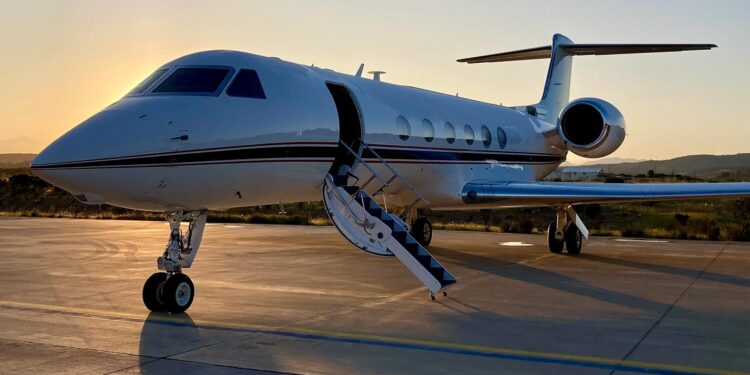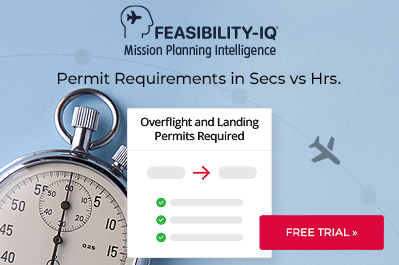Business Aircraft Ops to Japan: Additional Services & Security

This is a post by author Hiroshi Higashiyama. Hiroshi is representative director for Universal Aviation Japan, which has aircraft ground handling facilities in Haneda, Narita, Sapporo, and Osaka. Hiroshi is an expert on business aircraft operations in Japan and can be contacted at hiroshihigashiyama@universalaviation.aero.
This aviation blog post is part of a series on operating to Japan and continues from our last article entitled “Business Aircraft Ops to Japan: Airport Operations.”
Continuing from our last article on airport operations, in this article we’ll discuss additional ground services and airport procedures which you should be aware of. For instance, some additional things to consider are cabotage restrictions, temporary importation, and crew and passenger screening. Ground support equipment (GSE) is typically available throughout major Japanese airports; however, you may encounter GSE and support issues when operating to smaller domestic airports that are not airports of entry (AOEs).
The following is an overview of what you need to know:
1. GSE equipment
Major airports in Japan are well stocked with GSE for most makes and models of business aircraft. Some airports, however, may not have certain equipment available – such as stairs, lav trucks, or specific towbars – so it’s best to confirm GSE requirements in advance. Availability of deicing equipment can also be an issue during colder months. For example, Narita (RJAA) only has a few deicing trucks available. Most of the deicing equipment is owned by the scheduled commercial airlines and only available to general aviation (GA) after commercial equipment has been serviced.
2. Cabotage considerations
While cabotage is not generally an issue for private non-revenue flights, these rules are strictly enforced for charter (non-scheduled commercial) flights. However, recent regulatory changes have eased cabotage restrictions somewhat. Multiple stops within Japan are now possible, and charter operators may pick up/drop off passengers in Japan for international legs, and/or move passengers within Japan if the passengers arrive from outside the country and depart from Japan in the same aircraft. Note, however, that other cabotage restrictions remain in place. For example, charter operators are not permitted to transport passengers solely between two or more Japanese airports. Always check in advance to ensure the trip you’re planning is permissible. For more information on this see our article Japan Flight Permit Changes – Improvements for Business Aviation.
3. Temporary aircraft importation
Some operators choose to temporarily import their aircraft into Japan when planning a number of domestic stops. This process only takes a few minutes and is accomplished on first arrival in Japan. Temporary importation allows operators to travel to non-AOEs while enjoying the added benefit of being able to have private transportation pick up/drop off planeside. Part of the process of temporary importation is a customs inspection of your aircraft. You’ll need to pay duty and/or taxes on any alcohol left onboard as well as on all remaining fuel. Temporary importation is only recommended for operators who plan to make multiple stops within Japan and use domestic airfields.
4. Local transport
While prepaid transport (car with driver) is recommended in Japan, there are also good high speed train and public taxi options to consider. Rental car facilities are also available at most airports, and ground handlers will assist with arrangements. Unless you’re very familiar with the area, rental vehicles are not recommended for crew transport. This is because driving is on the left side of the road, most road signs are only in Japanese, streets are often narrow and busy, and parking options can be challenging.
5. Airport security
Airport security is excellent throughout most of Japan with all airports monitored and patrolled 24/7 and armed police stationed at each airport. Additional aircraft security is not required but may be obtained. If you wish to have a dedicated aircraft guard, this must be arranged/approved in advance but the guard may not be armed. The security company you’re using must ensure that their guards have appropriate documentation and authorized to work airside.
6. Airside access
For airside access it’s necessary to have a security pass issued. These passes may be obtained directly from the airport authority or from a company that has a business license allowing airside access. To access international operations, however, a special customs, immigration, and quarantine pass is also needed.
7. Passenger/crew screening
Larger airports have security screening procedures in place for GA passengers/crew. The process of clearing security varies from a few up to 30 minutes in cases of airports where passengers/crew clear security at the main terminal.
8. Pre-departure
On the day of departure your ground handler will greet crew curbside or at a pre-determined meeting point. Luggage will be received, processed through security, and transported to the aircraft. Passengers and crew are escorted by the handler to the security check point. Passengers go through regular/commercial security lines while crew usually has access to faster security screening lines. At larger airports, such as Narita (RJAA) and Haneda (RJTT), security screening is typically a quick no delay process.
9. Additional reading: Operating to Japan – Series Index
Note: Links will be updated as articles are published.
- Part 1 – Ground handling
- Part 2 – Airport operations
- Part 3 – Additional services and security
- Part 4 – Fuel
- Part 5 – Customs, immigration, and quarantine information
- Part 6 – Costs and fees
- Part 7 – Airport slots
- Part 8 – Permits
- Part 9 – Flight planning and weather
- Part 10 – Hotels and local area
Conclusion
Operators traveling to Japan should speak to their 3rd-party provider or ground handler regarding processes at the airport. There are options to consider for domestic travel – temporary importation – that operators may choose to use due to added benefits. Cabotage restrictions do exist and are applicable to charter operators only. For any operations by charter flights, speak to your 3rd-party provider to determine if the flight is possible.
Later we will discuss aviation fuel for Japan and how it may affect your trip.
Questions?
If you have any questions about this article or operating to Japan, contact me at higashihigashiyama@universalaviation.aero.




